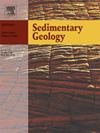Tabernas盆地的新沉积记录:对西地中海墨西尼亚盐度危机的启示
IF 2.9
2区 地球科学
Q1 GEOLOGY
引用次数: 0
摘要
塔伯纳斯盆地(西班牙东南部)以其托尔顿浊积岩而闻名,也记录了厚的墨西尼亚层序(>;200米),为研究墨西尼亚盐度危机(MSC)提供了有价值的见解。然而,塔伯纳斯沉积物与附近索巴斯盆地经典序列的地层对比仍然不清楚。本文提出了一个复合地层剖面(命名为Yesón Alto),该剖面涵盖了Tabernas盆地记录的MSC的前蒸发期、同蒸发期和超蒸发期,提供了详细的古环境和年代地层特征。我们对北地科迪勒拉两个边缘盆地之间的联系以及地中海西部在MSC期间发生的古环境变化提供了新的约束。在晚墨西世前蒸发期,粉砂岩和页岩与远浊积岩交替,记录了暖贫营养和冷富营养浮游有孔虫组合的转变,表明了进动驱动的气候波动对水柱的影响。逐渐的盆地限制作用导致了早期混杂碳酸盐陆架的发育,并受到了大量的硅-碎屑流的影响。16个关键浮游有孔虫生物事件与地磁反转(C3An)。(1n ~ C3r, 6.035 Ma),并与Sorbas盆地的天文校准周期相关联,表明两个盆地的MSC可能是同步开始的。塔伯纳斯的蒸发期以4个亚硒酸质石膏层为代表,其间穿插着硅质和碳酸盐矿床。相分析和石膏同位素组成(δ34Ssulfate和δ18Osulfate)表明,蒸发岩代表了地中海第一阶段初级下石膏(Primary Lower gypsum, PLG)的初始旋回。在plg4石膏层下方,富含海洋动物的蒸发间水平表明,在蒸发岩降水期后,海洋环境恢复到接近正常水平。由三角洲-河流砾岩和砂岩组成的超蒸发单元反映了区域退退趋势,标志着盆地边缘的大陆化。这些陆相沉积在蒸发盆地上的沉积受北海科迪勒拉向东隆升的影响,最终导致Tabernas盆地在中生代第2和第3期之前或期间暴露。Tabernas盆地的古环境演化表明,在早MSC之前和早期,与Sorbas盆地的海相联系持续存在,与气候因素相关的构造在其沉积体系演化中发挥了关键作用。本文章由计算机程序翻译,如有差异,请以英文原文为准。
A new sedimentary record from the Tabernas Basin: Implications for the Messinian Salinity Crisis in the Western Mediterranean
The Tabernas Basin (SE-Spain), renowned for its Tortonian turbidites, also records thick Messinian successions (>200 m) that offer valuable insights into the Messinian Salinity Crisis (MSC). Yet, the stratigraphic correlation of the Tabernas sediments with the classic successions of the nearby Sorbas Basin remains unclear. This study presents a composite stratigraphic section (named Yesón Alto) that covers the pre-evaporitic, syn-evaporitic, and supra-evaporitic stages of the MSC recorded in Tabernas Basin, offering detailed paleoenvironmental and chronostratigraphic characterization. We provide new constraints on the connections between two marginal basins of the Betic Cordillera and on the paleoenvironmental changes that took place in the Western Mediterranean during the MSC. During the Late Messinian pre-evaporitic phase, siltstones and shales alternating with distal turbidites recorded shifts between warm-oligotrophic and cold-eutrophic planktonic foraminiferal assemblages, indicating the influence of precession-driven climatic fluctuations on the water column. Progressive basin restriction led to the development of an incipient hybrid carbonate shelf, subjected to significant siliciclastic influx. 16 key planktonic foraminifera bioevents and a magnetic reversal (C3An.1n to C3r at 6.035 Ma) have been identified and correlated with the astronomically calibrated cycles of the Sorbas Basin, suggesting the possible synchronous onset of the MSC in both basins. The evaporitic stage in Tabernas is represented by four selenitic gypsum beds intercalated with siliciclastic and carbonate deposits. Facies analysis and gypsum isotopic compositions (δ34Ssulfate and δ18Osulfate) suggest that evaporites represent the initial cycles of the Primary Lower Gypsum (PLG) of the MSC Stage 1 in the Mediterranean. Below gypsum bed PLG 4, an inter-evaporitic level rich in marine fauna indicates the episodic re-establishment of near-normal marine conditions after periods of evaporite precipitation. The Supra-evaporitic unit, comprising deltaic-fluvial conglomerates and sandstones, reflects a regional regressive trend and marks the continentalization of the basin's margins. The progradation of these continental deposits over the evaporitic basin was favored by an eastward uplift trend in the Betic Cordillera, ultimately leading to exposure of the Tabernas Basin before or during Stages 2 and 3 of the MSC. The paleoenvironmental evolution of the Tabernas Basin indicates that marine connections with the Sorbas Basin persisted before and during the early MSC and that tectonics associated with climatic factors played a key role in the evolution of its sedimentary systems.
求助全文
通过发布文献求助,成功后即可免费获取论文全文。
去求助
来源期刊

Sedimentary Geology
地学-地质学
CiteScore
5.10
自引率
7.10%
发文量
133
审稿时长
32 days
期刊介绍:
Sedimentary Geology is a journal that rapidly publishes high quality, original research and review papers that cover all aspects of sediments and sedimentary rocks at all spatial and temporal scales. Submitted papers must make a significant contribution to the field of study and must place the research in a broad context, so that it is of interest to the diverse, international readership of the journal. Papers that are largely descriptive in nature, of limited scope or local geographical significance, or based on limited data will not be considered for publication.
 求助内容:
求助内容: 应助结果提醒方式:
应助结果提醒方式:


